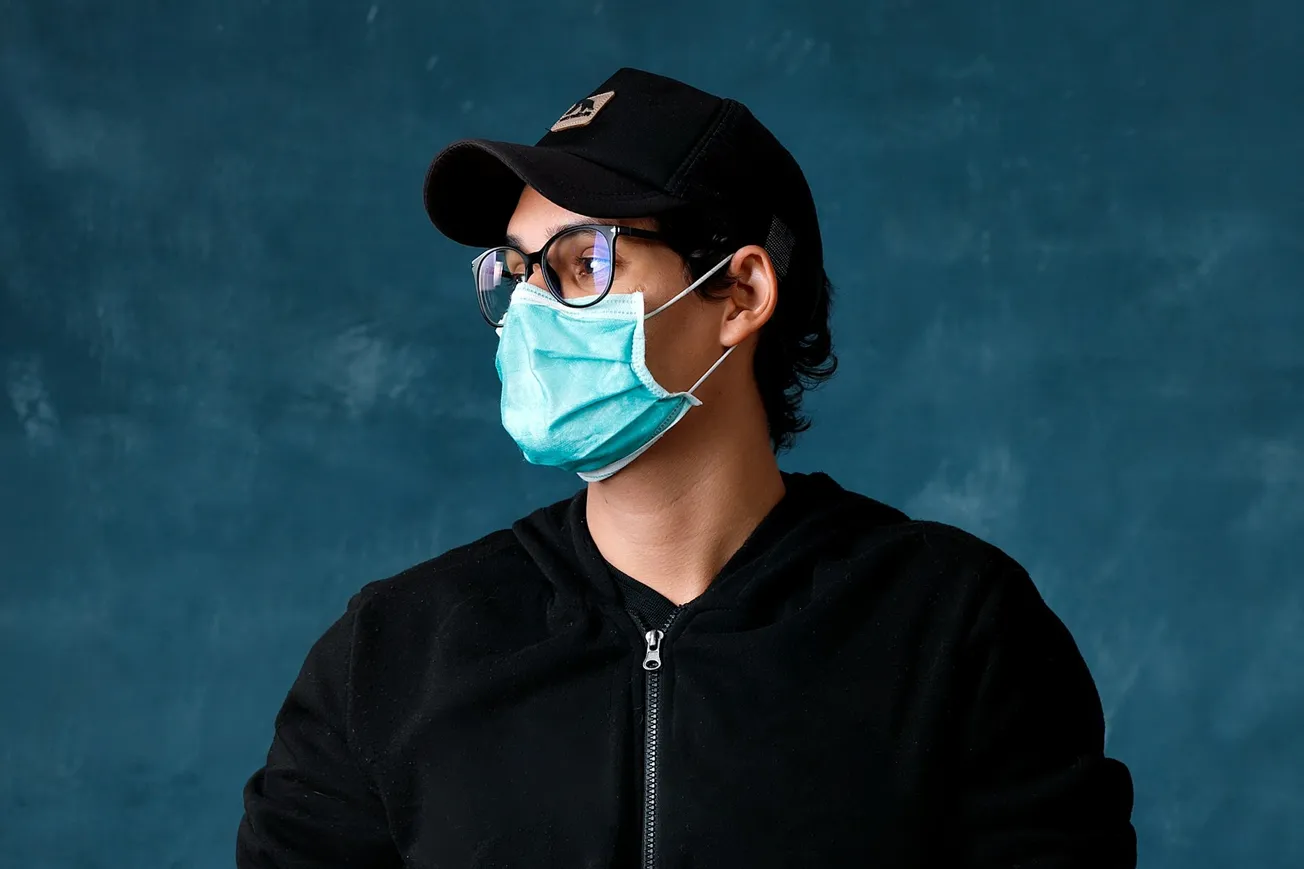In 2020 when Covid put restrictions on the production industry, the idea of shooting remotely was quite novel. In fact, when socially distanced production began, it was seen by many to be a hardship at worst and an inconvenience at best. When the pandemic got under control and in-person shooting came back (albeit with major testing protocols and added costs), there was rejoicing and a collective sigh of relief. While boots-on-the-ground production is the norm again, there is value in what we learned and there are some powerful reasons to keep our Covid tools handy in our tool belts.
The on-set camaraderie and the post-shoot-martini celebrations are a valuable part of the production experience, but are limited to those who are literally on-set. The remote feed opens up new educational opportunities for budding creative talent. Karin Henderson, former creative executive at Paramount Global's MTV and NBCUniversal and current freelance writer and director, notes, “It was frustrating to try to build a team but not be able to send writers or ACDs to shoots because the video village was too small or the budget was too tight. Once we started doing remote, we got to expose these people to real-life productions.”
Similarly, the remote feed allows up-and-coming creative talent to attend shoots and be supervised without wasting senior creatives’ time traveling and sitting in video village, and allows clients to pop in and out for important parts of the shoot without giving up an entire day. “Sometimes a client has a particular way they want their product shot, but don’t need to see the entire shoot,” says Henderson. “Remote is great for that.”
It also offers very targeted communication channels. The pandemic necessitated interfaces like Zoom and Teams chats and text messaging to communicate. “On set, every conversation can be heard by everyone. We learned that having separate channels of communication between agency/client, agency/creative lead, creative lead/director is great," says Henderson. In particular, it gives a creative the opportunity to receive client feedback, figure out a solution, and communicate that to the AD rather than having the feedback broadcast to all, which opens up the topic for discussion among anyone present.
As for tech, the pandemic forced the industry to lean more on iPhone shooting, which was once considered low quality. According to Henderson, “A lot of iPhone packages were sent to a lot of talent for in-home shooting. We now know that with decent lighting phone shooting is more than decent for simple to-camera stuff.” So much content is created for social media that creative can be developed to intentionally look self-shot, saving a lot of money and sometimes availing the production of talent who otherwise couldn’t come to set.
While Covid was a painfully difficult time, a few good lessons and tools came from it that will continue to improve on-site production if they’re implemented and not left to the pandemic era. Leveraging remote video village to open up shoots for more participation, maximizing the value of specific channels of communication, and acknowledging the usefulness of simple iPhone shooting are things we should and still do. The mandatory masking, the 24-hour pre-shoot swab test, and additional overhead margins the pandemic incurred, however, are better left on the cutting room floor. Perhaps the lessons we learned will be a bright spot as we look at that unprecedentedly difficult time in our rearview mirror.

We sent you a special bulletin last week announcing that IATSE and the AMPTP have struck a tentative deal on both the Basic Agreement and the Area Standards Agreement. If you missed it, we highlighted the wage increases (7%, 4%, and 3.5% over the next three years), additional overtime provisions for hourly and on-call workers, guidelines for AI as a tool for production, $700 million for pensions and health plans, more provisions for worker lodging and transportation to prevent accidents. While the deals are still pending ratification, this should be a strike free summer for IATSE.
On the AI terms specifically, the agreement includes provisions to aid employees whose jobs are threatened by AI and protect those whose work is centered around the new technology. Employees are protected from inputting language into AI that would put their jobs in jeopardy. Workers are indemnified from legal liability if their employer consents to the use of AI in their work, except for in cases of “gross negligence.” And it’s worth noting that IATSE has established its right to request meetings to adapt the new agreement over time.
Freelance casting assistants are one step closer to becoming Teamsters. An election will be held through the National Labor Relations Board, which will likely allow freelance casting assistants to be represented by Teamsters Local 399 (Los Angeles) and Teamsters Local 817 (New York). The Teamsters are mustering to begin negotiations on a new casting agreement in August; the current one expires on September 30.
A24’s new film “Sing Sing” pioneers a new model of production that Director Greg Kwedar calls “community based filmmaking,” a method in which the people and places portrayed in a film are sourced directly from the communities depicted in it. The economic model of the film is also unique: the entirety of the cast was paid the same rate determined by SAG minimums and everyone who worked on the film received equal equity in its earnings. This model aims to create an environment in which production can become more equitable both above and below the line.
California’s reform of PAGA reduces employer liability. In many cases, with the revised law, employers will be able to curb legal action by taking measures to respond to violations early. Some of the key reforms include: measures to stop “fishing expeditions” by requiring plaintiffs to have been personally affected by code violations; new, lower, monetary caps for employers who take “all reasonable steps” to comply with the labor code; and a reduction of maximum penalties for brief violations. Now more than ever, PAGA incentivises California employers to effectively monitor their wage practices to avoid serious legal liability. We have heard of PAGA being used by plaintiff law firms who work primarily with security personnel on productions (safety and security crew), so the best advice is to make sure everyone is paid on time.
New Jersey... and Albuquerque: Netflix's updated Albuquerque studios has become a thriving center for production in New Mexico. The studio has invested around $900 million in the state’s production industry since 2019. Netflix Co-CEO Ted Sarandos cites New Mexico’s beautiful landscapes, dedicated workforce, and strong community as key aspects of the project’s success.
And coming full circle: In a tentative agreement, Skydance Media and Paramount Global are set to merge, with Skydance purchasing the holding company National Amusements. This deal has been approved by the Paramount board. While this doesn’t reduce the number of majors, the new owners have promised extensive cuts across the board, which will likely reduce the amount and dollars of purchases.
Have a news item for us? Send it our way at info@production.ink.

Peter Oillataguerre became Head of Feature Film Production for Amazon MGM Studios in a new role for the company…. Disney Branded Television hired Christine Mansfield as Head of Post Production & Innovation…. As CEO Danny Glover steps down, Louverture Films adds Melony Lewis and Adam Lewis as principal partners and Frank Lehmann as CFO…. Australian production company VicScreen introduced Sarah Bond as First Peoples Strategic Lead and Katy Roberts as Production Executive…. After just six months in the position, Universal International Studios head Roma Khanna confirmed her departure from the company…. Ava DuVernay’s Array Now hired MJ Caballero as VP of Physical Production, Eric Fisher as Manager of Digital Production, and Meredith Shea as Crew’s Director of Industry Relations…. Kirby Adams joined Miramax as Head of Physical Production…. Hangtime International Pictures hired co-founder of Rebel Park Productions Jessica Malik as Head of Development, with the two companies planning to establish a partnership in the near future….Tomorrow Studios promoted Alissa Bachner to EVP of Development and hired Josh Bratman as Head of Features.... Deanna Barillari was named SVP of Development and Production at Linden Productions, where Mia Samuels was also promoted to Creative Executive.
Tell us about your best moves by sending us info (and/or a press release) to info@production.ink.
Thanks for being part of our community of producers. We have seen amazing growth in subscribers since we launched, but we know some cool folks haven't heard of us (yet). Please forward this newsletter to industry folks you think would benefit from joining our community. All new subscribers will get a copy of our Special Report on Artificial Intelligence in Production.

We’ll be back in a couple of weeks - The Production.Ink team.
Physical Address: 367 St. Marks Avenue, Suite 765, Brooklyn, NY 11238

